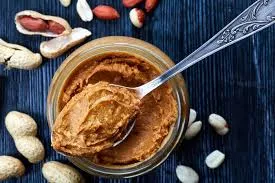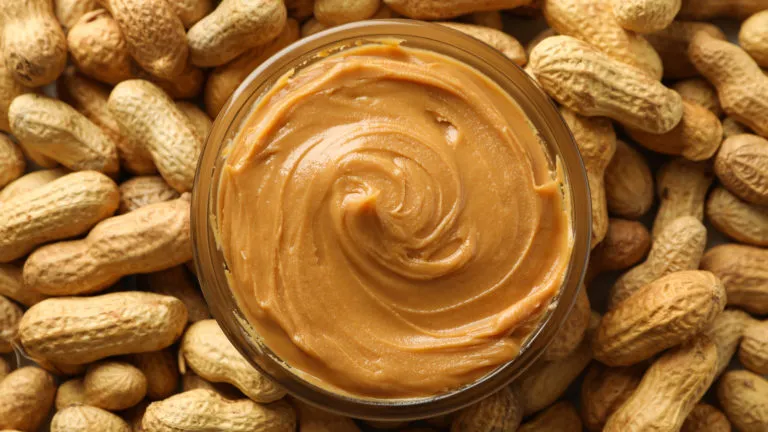
From Natural To Flavored All You Need To Know About Peanut Butter
Who doesn’t love peanut butter? Whether it’s on toast, in a sandwich, or just straight out of the jar, peanut butter is a beloved staple in many households. But have you ever wondered what goes into making different types of peanut butter?
From natural to flavor, there’s more to this versatile spread than meets the eye. And we’re here to give you all the info you need to make an educated decision about your nutty needs. In this article, we’ll tackle all things peanut butter, from what goes into each type to how to store it properly for maximum shelf life and flavor. So come along for an informative and tasty journey—it's time to learn everything there is to know about peanut butter!
Natural Peanut Butter: Unprocessed and Healthy
If you’re looking for the most nutritious and wholesome peanut butter, natural is your go-to option. Unlike its flavored counterparts, natural peanut butter is just as Mother Nature intended—unprocessed and nothing added. It simply consists of ground peanuts with a grainy texture and a small amount of natural oil (usually hydrogenated vegetable oil) that needs to be stirred before use.
The good news about natural peanut butter is that it often contains less sugar and other additives, which can make it the healthier choice. Plus, its ingredients are generally easy to recognize—so you know exactly what you’re getting! It’s also surprisingly nutritious too: a two-tablespoon serving contains 8 grams of protein and 2 grams of dietary fiber. With all these nutritional benefits, it’s no wonder why many peanut butter lovers prefer to stick with the original!
Creamy and Crunchy Peanut Butter: What’s the Difference?
Now that you know there's more to peanut butter than meets the eye, let's discuss the classic battle between creamy and crunchy. But first things first—what separates the two?
Creamy peanut butter is just what it sounds like—it's smooth, spreadable, and easily mixed into recipes. It relies on oil to make it creamy instead of chunks of peanuts for texture. On the other hand, crunchy peanut butter has flecks of chopped peanuts suspended in the spread for a bit of crunch in every bite.
The difference is actually quite simple—so no more debates between creamy and crunchy fans! At the end of the day, it all comes down to preference—do you like your peanut butter smooth or with a little something extra?
New Flavors in Peanut Butter: Chocolate, Honey and More
You might not know it, but there are some delicious flavored peanut butters on the market today! Sure, the classic creamy or crunchy may always have a special place in our hearts, but sometimes you need to mix it up.
Made with natural peanut butter and sweeteners like honey, agave or brown sugar, these flavored varieties are perfect for those times when you want something a little different. Plus, they're still packed with the same protein-rich punch of regular peanut butter!
Chocolate Peanut Butter
Looking for a real treat? A combination of natural peanut butter and dark chocolate is sure to please even the pickiest taste buds. Perfect for spreading on toast for breakfast or as an indulgent snack throughout the day, this chocolate peanut butter flavor is also great for baking.
Honey Peanut Butter
The perfect blend of natural peanut butter and honey makes for an irresistibly sweet breakfast treat which you won't have any trouble finding in your local store. Creamy, thick and made with real ingredients, this delicious alternative to traditional peanut butter is great for dipping apples or celery into—all while giving you that same boost of protein and healthy fats you love.
So if you want to switch up your usual snack routine, try one of these new flavors in creamy or crunchy natural peanut butter.
Low-Fat or Regular? Which Is Better for You?
Some people choose to go with the low-fat varieties when shopping for peanut butter, thinking that it's a healthier option. But which one is actually better for you?
It's true that low-fat peanut butter has lower levels of total fats, saturated fat and cholesterol than regular peanut butter. But it also has a lot less protein, fiber, and all those other essential vitamins and minerals, like magnesium, zinc, and iron. Sure, you get less fat—but you're also losing out on the good stuff!
Regular peanut butter still has a large number of healthy fats that are full of omega-3 fatty acids. That makes it an excellent source of energy and keeps your heart healthy too. Eating regular peanut butter in moderation helps to control blood sugar levels as well—so if you're looking for a tasty snack alternative that won't break the calorie bank, then reach for regular peanut butter.
Organic vs Non-Organic: What’s the Difference for Peanut Butter?
Another major difference between types of peanut butter is organic and non-organic. But what makes them so different?
Organic Peanut Butter
Organic peanut butter is what you get if you don’t add any artificial ingredients such as flavors, preservatives, and added sugars. Nothing with organic peanut butter has been sprayed with pesticides or preservatives. It only consists of peanuts and maybe a little pinch of sea salt. The taste can vary depending on the brand, but it will generally have a more “natural” taste compared to regular peanut butter.
Non-Organic Peanut Butter
Non-organic peanut butter often contains added sugar or sweeteners, preservatives and other artificial ingredients like hydrogenated oil, which is used to give the product a longer shelf life and make it easier to spread – think Skippy or Jif. This type of peanut butter tastes much sweeter than its organic counterpart, making it ideal for desserts and snacks for kids. Plus, you're able to get creative by adding your own flavors, like jam or chocolate.
How to Choose the Right Peanut Butter for You
When it comes to choosing the best peanut butter for you, it all depends on what you are looking for in terms of nutrition and taste. Do you prefer a natural version, with just peanuts, salt and perhaps some oil? Or would you like something with a bit of added sweetness or other flavors?
Natural Peanut Butter
Natural peanut butter is the purest form of this spreadable delight. With just peanuts and salt (and maybe some oil or sugar) to bind the ingredients together, natural peanut butter is a smooth yet crunchy option that allows the nutty flavor of the legume to really shine. It’s an ideal choice if you’re looking for a healthy snack option that is rich in protein without too much added sugar.
Flavored Peanut Butter
Flavored peanut butter isn't quite as nutritious as its unadulterated counterpart, but it does add a bit more fun to your morning routine. From chocolate-flavored options to unique salt-and-vinegar combinations, flavored peanut butter provides an interesting alternative for those who like some variety in their lives. Be warned—some flavored peanut butters can be loaded with sugar and other additives!
So when choosing the right peanut butter for yourself, make sure to look closely at what's on the label so you know exactly what you're getting—whether it's a natural or flavored version.
Conclusion
So next time you're in the supermarket, take a good look at the peanut butter aisle and see what suits your tastes best. Peanut butter is an incredibly versatile ingredient, and can be used to add flavor, texture and nutrition to all sorts of recipes.
Whether you opt for natural, flavored or a mix of the two, you can always rest assured that you're getting a delicious and nutritious addition to your dish. So don't be afraid to experiment and find the perfect peanut butter for you - after all, there's no wrong way to enjoy it!

.webp)
